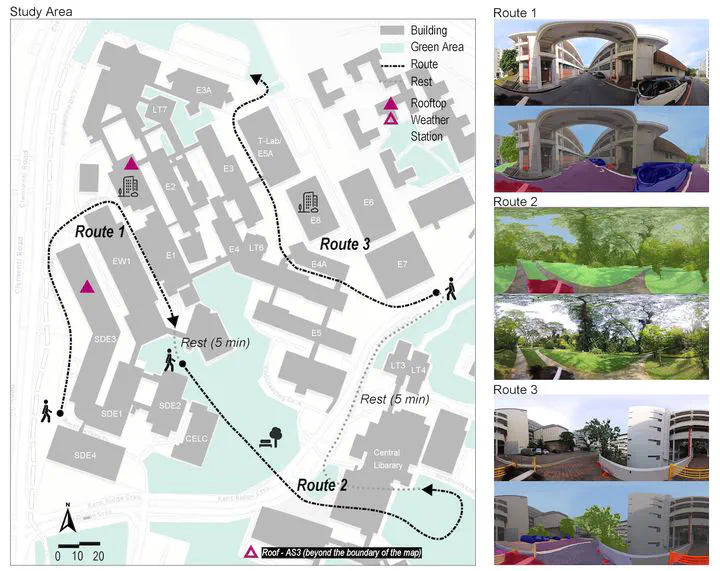Walking through green and grey: Exploring sequential exposure and multisensory environmental effects on psychological restoration

Abstract
Urban environments are increasingly recognised for their potential to support psychological restoration, yet most studies assess green and grey spaces in isolation and rely on static, lab-based measures. This study introduces a multi-layered analytical framework that integrates experimental walking, momentary perception tracking, and machine learning to investigate how multisensory urban features shape restoration. Conducted on a university campus, the experiment exposed 20 participants to sequential grey–green–grey walking routes. Restoration was measured through pre/post psychometric surveys, heart rate variability (HRV), and minute-level micro-surveys during walking. Results reveal three key insights: (1) green exposure induces a short-term “inoculation effect”, with restorative benefits persisting even after re-entering grey environments; (2) visual features emerged as the most influential predictors of restoration, followed by noise and microclimate; and (3) solar irradiance — when balanced with moderate temperature and humidity — positively contributing to relaxation and stress reduction. Beyond experiments, we simulated design interventions on low-restoration scenarios using a large language model to enhance visual attributes, followed by predictive evaluation via machine learning. These simulations showed measurable improvements in predicted restoration, validating a data-driven approach for environmental optimisation. This research contributes to neurourbanism by bridging spatial sensing, physiological feedback, and AI-driven interpretation. It offers practical guidance for creating psychologically supportive urban environments — such as prioritising early green exposure and mitigating noise pollution — and introduces a replicable pipeline for evaluating restorative potential in future urban design.